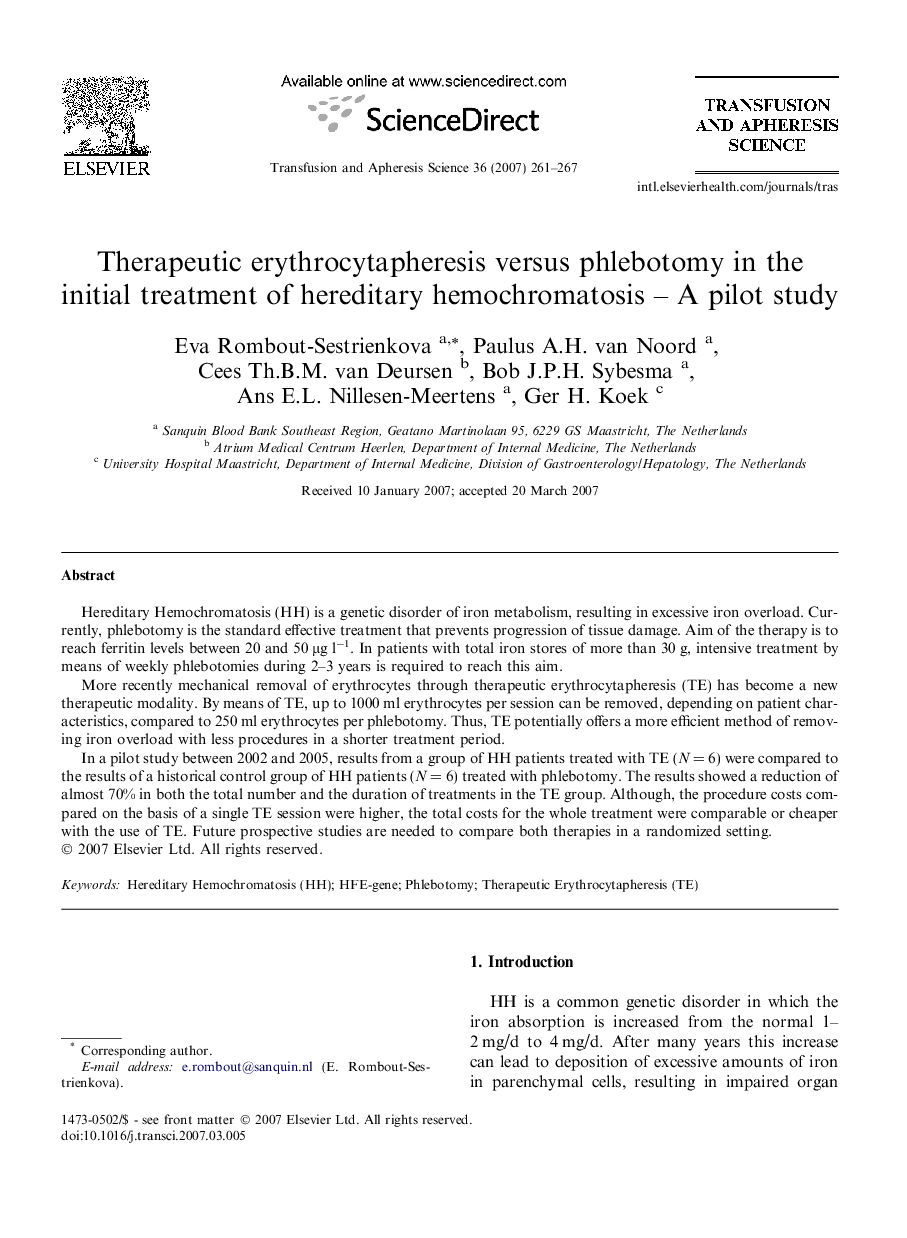| Article ID | Journal | Published Year | Pages | File Type |
|---|---|---|---|---|
| 3336203 | Transfusion and Apheresis Science | 2007 | 7 Pages |
Hereditary Hemochromatosis (HH) is a genetic disorder of iron metabolism, resulting in excessive iron overload. Currently, phlebotomy is the standard effective treatment that prevents progression of tissue damage. Aim of the therapy is to reach ferritin levels between 20 and 50 μg l−1. In patients with total iron stores of more than 30 g, intensive treatment by means of weekly phlebotomies during 2–3 years is required to reach this aim.More recently mechanical removal of erythrocytes through therapeutic erythrocytapheresis (TE) has become a new therapeutic modality. By means of TE, up to 1000 ml erythrocytes per session can be removed, depending on patient characteristics, compared to 250 ml erythrocytes per phlebotomy. Thus, TE potentially offers a more efficient method of removing iron overload with less procedures in a shorter treatment period.In a pilot study between 2002 and 2005, results from a group of HH patients treated with TE (N = 6) were compared to the results of a historical control group of HH patients (N = 6) treated with phlebotomy. The results showed a reduction of almost 70% in both the total number and the duration of treatments in the TE group. Although, the procedure costs compared on the basis of a single TE session were higher, the total costs for the whole treatment were comparable or cheaper with the use of TE. Future prospective studies are needed to compare both therapies in a randomized setting.
